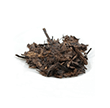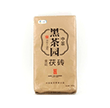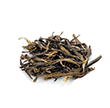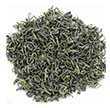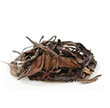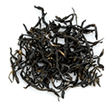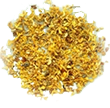About Chinese Tea
In the West today, over 90% of tea consumed is "Broken Black Tea", from India, harvested from the native Camellia sinensis var. assamica plant. This is a direct connection to the early efforts of British growers in India trying to duplicate their favourite Chinese beverage using early Industrial Revolution methods of production. These early efforts contributed to the high profits that fueled the British Empire in the 18th and 19th centuries - and shaped world history in the process. For more information about Black Tea and its effect on history, see: A Quick History of Chinese Black Tea.

Chinese tea from the Camelli a sinensis var. sinensis plant has a lower yield than its Indian cousin, a more refined complexity and lower caffeine levels. For information about caffeine levels in tea, see: Chinese Tea and Health Benefits – Caffeine.
Manufacturing high quality Chinese teas remains a laborious process of hand-picking and processing whole leaves to retain the full flavor of the tea leaf. Through the Song, Tang, Ming and Qing dynasties and into the modern age, the Chinese love and respect for nature, combined with the continual development of new growing and processing techniques has given us the refined and high quality teas we enjoy today.
With the resurgence of the Chinese economy and growth of the Chinese tea industry, discerning tea drinkers in the West are re-discovering the New World of Chinese teas which provide high quality, variety, delicacy, depth and complexity of flavor and aroma.
One Plant - Thousands Of Teas!
Believe it or not, all tea is made from one plant, known as Camellia sinensis. It is an evergreen shrub that can grow into a small tree. The Camellia sinensis sinensis sub-species is native to Southeast China. The plants can live for up to 100 years or more and the leaves are harvested year round. Another sub-species called Camellia sinensis assamica is native to India. All tea consumed in the world comes from these two plants.
Over the centuries, Chinese manufacturers have been able to produce thousands of varieties of tea from the Camellia sinensis sinensis plant, each having its own unique flavour. This has been achieved by controlling 4 basic elements:
- Region where the plant is located; soil and altitude are key factors
- Time of harvesting the leaves - early, middle or late in each season
- Method of harvesting - picking only buds or buds with leaves
- Processing - withering, rolling, oxidizing, drying and gradin
See a chart for a comparison of methods: How Chinese Tea Is Made.
The fifth element that affects the flavour of tea is how it is prepared just before drinking.
5. Preparation - type and quality of the teapot, temperature and quality of the water, brewing times
One thing that cannot be controlled is the weather and this has a major effect on tea plants and the flavour of the teas they produce. A tea manufacturer may produce the same type and grade of tea for decades but each year the tea may have a slightly different taste. Each spring, tea-lovers eagerly await the new picking of Tie Guan Yin (also known as Gun Yam, Iron Buddha, Buddha of Mercy, Chinese Oolong) to sample its fresh and fragrant flavour and aroma and compare it to last year's pick.
To learn about tea-making using the traditional Chinese Gong Fu Cha (Tea With Great Skill) method, read our guide Gong Fu Cha - The Complete Guide To Making Chinese Tea by Daniel Lui .
 Top of Page
Top of Page

Ask The Tea Wizard
Don't know which tea is right for you? Answer a few questions and the Online Wizard will show you all the Chinese teas that suit your taste.


